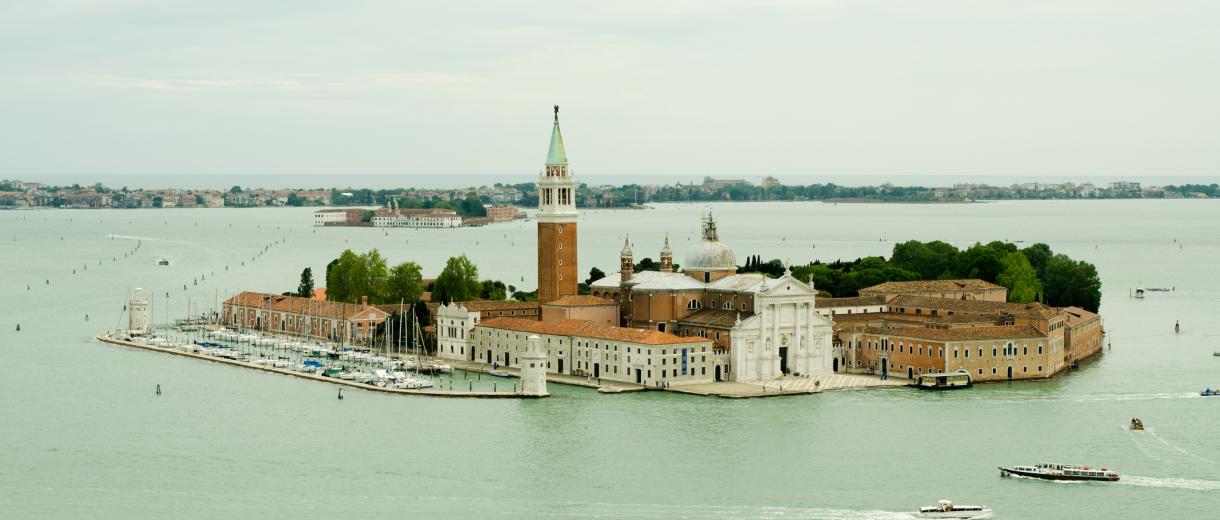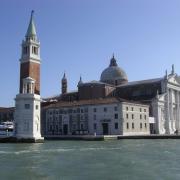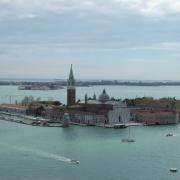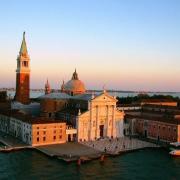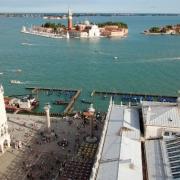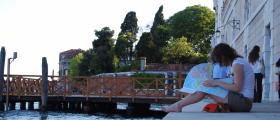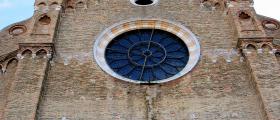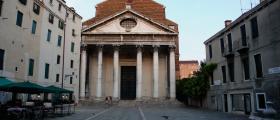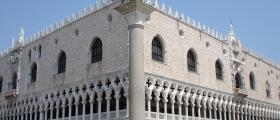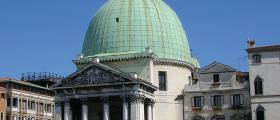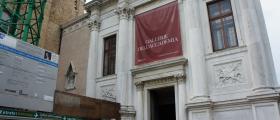Island of San Giorgio Maggiore
The Island can be admired from Riva degli Schiavoni, in Saint Mark’s. It is separated from the island of Giudecca from the Canale delle Grazie and the only way to reach it is by public water boat or a taxi boat.
The island belonged to the Patrician family of the Memmo’s (it was called Mummia Island). In the VIII-IX century it was erected a little church in honour of San Giorgio and the name was changed in Isola di San Giorgio Maggiore (in order to distinguish it from San Giorgio in Alga).
The monastery was erected by the Benedettino Monk Giovanni Morosini (the first Abbot of the monastery itself). Right after the area surrounding the island was reclaimed. The island became his property in 982, it was gifted to him by doge Tribuno Memmo.
During the Years the small church left place to the current Basilica, projected by Palladio and became the symbol of the cultural importance of the San Giorgio Maggiore Monastery. On the inside there are paintings by Tintoretto, Jacopo Palma il Giovane, Sebastiano Ricci and Carpaccio. The bell tower is dated 1791.
The monastery existed until Napoleon made of it a Military Area and so remained during the Austro-Hungarian empire and the Italian Reign. A warehouse and a dock with two small towers by each side were built and the island then became a duty free area.
In 1951 the Cini Foundation obtained the possibility to use the Monastery and the surrounding areas. The restoration of the whole island began. In this period was built the open area amphitheatre (by the Cini Foundation): The Green Theatre (1954). The Island now is at the centre of various cultural activities organized by the Giorgio Cini Foundation that made of it a worldwide importance centre.
No need to say about the architectonic and artistic importance of the island itself, scenery of the greatest Italian master operas between 500 and 600.
Has to be mentioned the so called "Manica lunga”, a passage 128 mt and 7 mt wide from the beginning of 500 (will become a biblioteque) the Basilica and the Palladium Closter (the Closter was ended in the 600 after his death) the "Supper Room" painted by Paolo Veronese (opera Le Nozze del Cana) and operas by Longhena that ended a few spaces of the complex with two baroque-style operas: The Big Staircase and the Biblioteque (still open and in use form Monday to Friday) ended respectively in 1645 and 1671.
The island and its complex are opened to the public (even if not all areas are accessible). We suggest to go on the top of the bell tower of the Basilica: from here you can enjoy a breathtaking view of Saint Mark’s Square.

